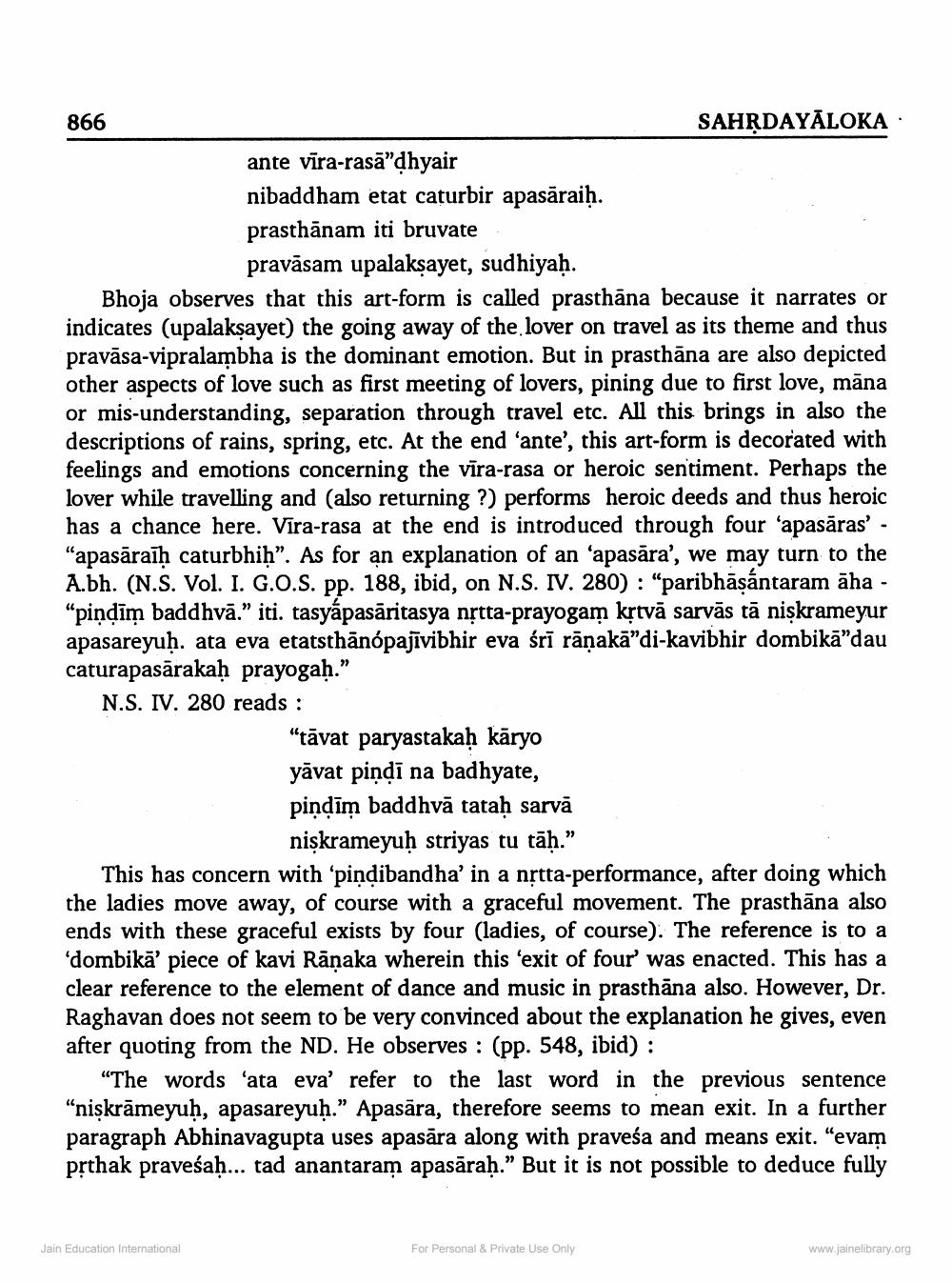________________
866
SAHRDAYĀLOKA ante vīra-rasā'dhyair nibaddham etat caturbir apasāraiḥ. prasthānam iti bruvate
pravāsam upalaksayet, sudhiyaḥ. Bhoja observes that this art-form is called prasthāna because it narrates or indicates (upalaksayet) the going away of the lover on travel as its theme and thus pravāsa-vipralambha is the dominant emotion. But in prasthāna are also depicted other aspects of love such as first meeting of lovers, pining due to first love, māna or mis-understanding, separation through travel etc. All this brings in also the descriptions of rains, spring, etc. At the end 'ante', this art-form is decorated with feelings and emotions concerning the vīra-rasa or heroic sentiment. Perhaps the lover while travelling and (also returning ?) performs heroic deeds and thus heroic
as a chance here. Vira-rasa at the end is introduced through four 'apasāras' - “apasāraīḥ caturbhiḥ”. As for an explanation of an ‘apasāra', we may turn to the A.bh. (N.S. Vol. I. G.O.S. pp. 188, ibid, on N.S. IV. 280) : "paribhāşántaram āha - "pindīm baddhvā.” iti. tasyápasāritasya nștta-prayogam kṛtvā sarvās tā niskrameyur apasareyuḥ. ata eva etatsthānópasīvibhir eva śrī rāņakā"di-kavibhir dombikā"dau caturapasārakaḥ prayogah." N.S. IV. 280 reads :
“tāvat paryastakaḥ kāryo yāvat pindi na badhyate, pindīm baddhvā tataḥ sarvā
niskrameyuḥ striyas tu tāḥ.” This has concern with 'pindibandha' in a nștta-performance, after doing which the ladies move away, of course with a graceful movement. The prasthāna also ends with these graceful exists by four (ladies, of course). The reference is to a 'dombikā' piece of kavi Rāņaka wherein this 'exit of four' was enacted. This has a clear reference to the element of dance and music in prasthāna also. However, Dr. Raghavan does not seem to be very convinced about the explanation he gives, even after quoting from the ND. He observes : (pp. 548, ibid) :
“The words 'ata eva refer to the last word in the previous sentence "niskrāmeyuh, apasareyuh.” Apasāra, therefore seems to mean exit. In a further paragraph Abhinavagupta uses apasāra along with praveśa and means exit. "evam prthak praveśaḥ... tad anantaram apasāraḥ.” But it is not possible to deduce fully
Jain Education International
For Personal & Private Use Only
www.jainelibrary.org




